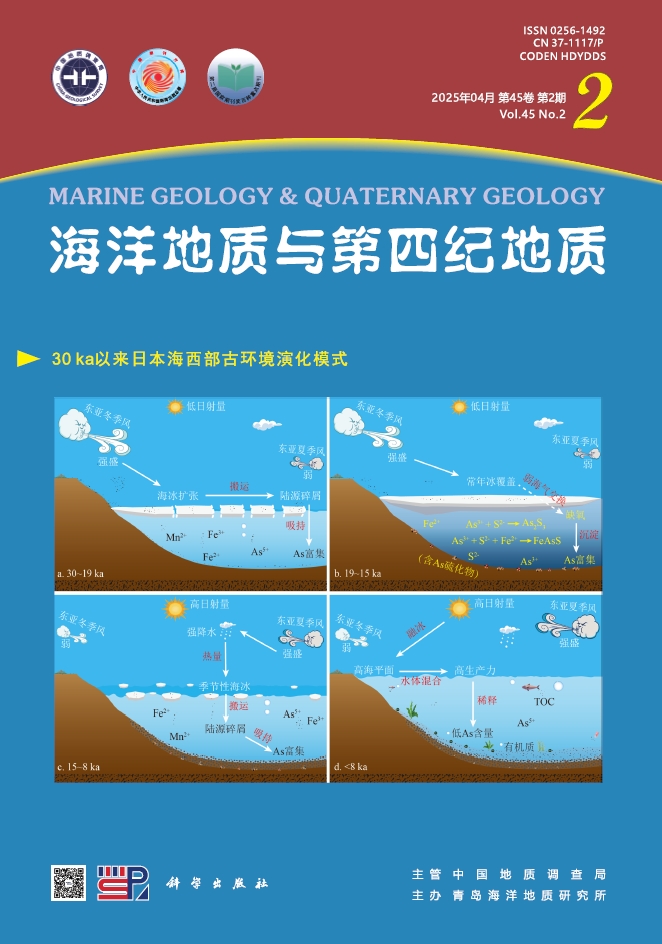| [1] |
Boom A, Marchant R, Hooghiemstra H, et al. CO2-and temperature-controlled altitudinal shifts of C4-and C3-dominated grasslands allow reconstruction of palaeoatmospheric pCO2[J]. Palaeogeogr. Palaeoclimat. Palaeoecol., 2002, 177:151-168.
Google Scholar
|
| [2] |
Francey R, Farquhar G. An explanation of 13C/12C variations in tree rings[J]. Nature, 1982, 297:28-31.
Google Scholar
|
| [3] |
Leavitt S, Long A. Evidence for 13C/12C fractionation between tree leaves and wood[J]. Nature, 1982, 298:742-744.
Google Scholar
|
| [4] |
Meyers P. Organic geochemical proxies of paleoceanographic, paleolimnologic, and paleoclimatic processes[J]. Organic Geochemistry, 1997, 27:213-250.
Google Scholar
|
| [5] |
Meyers P. Applications of organic geochemistry to paleolimnological reconstructions:a summary of examples from the Laurentian Great Lakes[J]. Organic Geochemistry, 2003, 34:261-289.
Google Scholar
|
| [6] |
Street-Perrot F, Huang Y, Perrott R, et al. Impact of lower atmospheric carbon dioxide on tropical mountain ecosystems[J]. Science, 1997, 278:1422-1426.
Google Scholar
|
| [7] |
Scott L. Grassland development under glacial and interglacial conditions in southern Africa:review of pollen, phytolith and isotope evidence[J]. Palaeogeogr. Palaeoclimat. Palaeoecol., 2002, 177:47-57.
Google Scholar
|
| [8] |
Huang Y, Street-Perrot F, Metcalfe S. Climate change as the dominant control on glacial-interglacial variations in C3 and C4 plant abundance[J]. Science, 2001, 293:1647-1651.
Google Scholar
|
| [9] |
van der Kaars S. A Late Quaternary palaeoecological record from the Banda Sea, Indonesia:patterns of vegetation, climate and biomass burning in Indonesia and northern Australia[J]. Palaeogeogr. Palaeoclimat. Palaeoecol., 2000, 155:135-153.
Google Scholar
|
| [10] |
Loader N, Hemming D. The stable isotope analysis of pollen as an indicator of terrestrial palaeoenvironmental change:a review of progress and recent developments[J]. Quat. Sci. Rev., 2004, 23:893-900.
Google Scholar
|
| [11] |
Nordt L, Boutton T, Jacob J, et al. C4 plant productivity and climate CO2 variations in south-central Texas during the late Quaternary[J]. Quat. Res., 2002, 58:182-188.
Google Scholar
|
| [12] |
Jahren A. The carbon stable isotope composition of pollen[J]. Rev. Palaeobot. Palynol., 2004, 132:291-313.
Google Scholar
|
| [13] |
Benner R, Fogel M, Sprague E, et al. Depletion of 13C in lignin and its implication for stable carbon isotope studies[J]. Nature, 1987, 329:708-710.
Google Scholar
|
| [14] |
Lockheart M, van Bergen P, Evershed R. Variations in the stable carbon isotope compositions of individual lipids from the leaves of modern angiosperms:implications for the study of higher land plant-derived sedimentary organic matter[J]. Organic Geochemistry, 1997,26:137-153.
Google Scholar
|
| [15] |
Amundson R, Evett R, Jahren A, et al. Stable carbon isotope composition of Poaceae pollen and its potential in paleovegetational reconstructions[J]. Rev. Palaeobot. Palynol., 1997, 99:17-24.
Google Scholar
|
| [16] |
Smith B, Epstein S. Two categories of 13C/12C ratios for higher plants[J]. Plant Physiology, 1971, 47:380-384.
Google Scholar
|
| [17] |
Loader N, Hemming D. Spatial variation in pollen δ13C correlates with temperature and seasonal development timing[J]. Holocene, 2001, 11:587-592.
Google Scholar
|
| [18] |
Bowman W, Hubick K, von Caemmerer S, et al. Short term changes in leaf carbon isotope discrimination in salt and water-stressed C4 grasses[J]. Plant Physiology, 1989, 90:162-166.
Google Scholar
|
| [19] |
Brugnoli E, Hubick K, von Caemmerer S, et al. Correlation between the carbon isotope discrimination in leaf starch and sugars of C3 plants and the ratio of intercellular and atmospheric partial pressures of carbon dioxide[J]. Plant Physiology, 1988, 88:1418-1424.
Google Scholar
|
| [20] |
Marino B, McElroy M. Isotopic composition of atmospheric CO2 inferred from carbon in C4 plant cellulose[J]. Nature, 1991, 349:127-131.
Google Scholar
|
| [21] |
O'Leary M. Carbon isotopes in photosynthesis[J]. Bio-Science, 1988, 38:328-336.
Google Scholar
|
| [22] |
Van Bergen P, Poole I. Stable carbon isotopes of wood:a clue to palaeoclimate[J]. Palaeogeogr. Palaeoclimat. Palaeoecol., 2002, 182:31-45.
Google Scholar
|
| [23] |
Charman D. The effects of acetylation on fossil Pinus pollen and Sphagnum spores discovered during routine pollen analysis[J]. Rev. Palaeobot. Palynol., 1992, 72:159-164.
Google Scholar
|
| [24] |
Loader N, Hemming D. Preparation of pollen for stable carbon isotope analyses[J]. Chemical Geology, 2000, 165:339-344.
Google Scholar
|
| [25] |
Descolas-Gros C, Scholzel C. Stable isotope ratios of carbon and nitrogen in pollen grains in order to characterize plant functional groups and photosynthetic pathway types[J]. New Phytologist, 2007, 176:390-401.
Google Scholar
|
| [26] |
Nelson D, Hu F, Michener R. Stable carbon isotope composition of Poaceae pollen:an assessment for reconstructing C3 and C4 grass abundance[J]. The Holocene, 2006, 16:819-825.
Google Scholar
|
| [27] |
Nelson D, Hu F, Mikucki, J, et al. Carbon-isotopic analysis of individual pollen grains from C3 and C4 grasses using a spooling-wire microcombustion interface[J]. Geochimica et Cosmochimica Acta, 2007, 71:4005-4014.
Google Scholar
|






 DownLoad:
DownLoad: